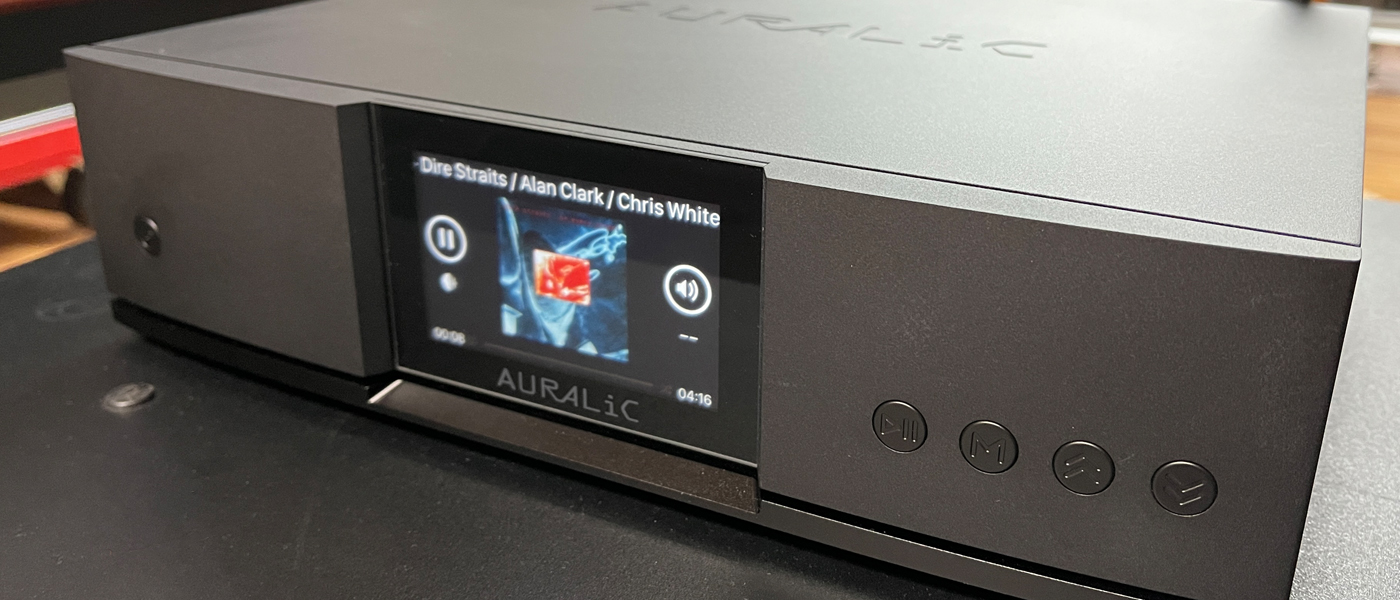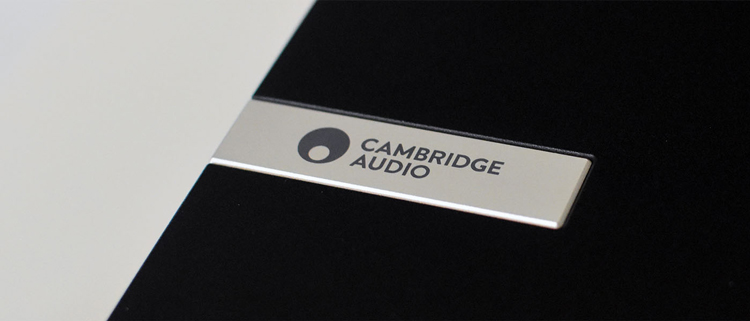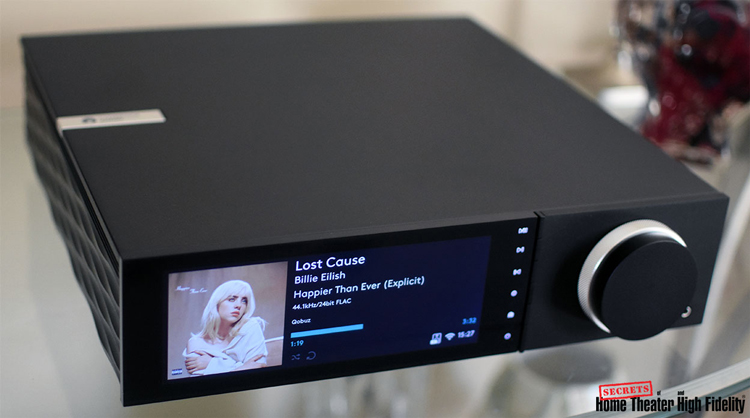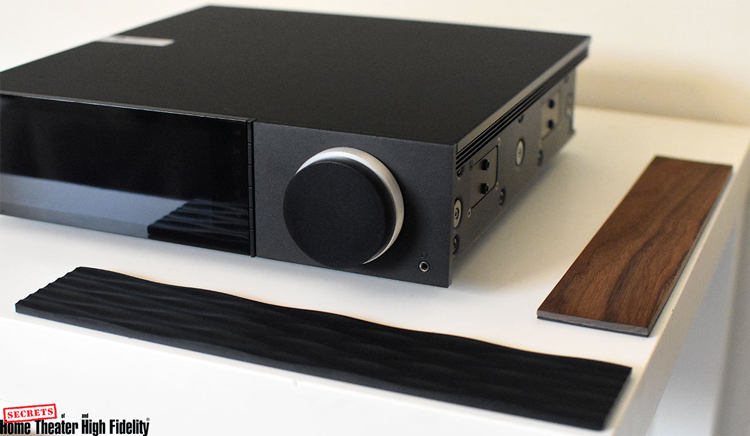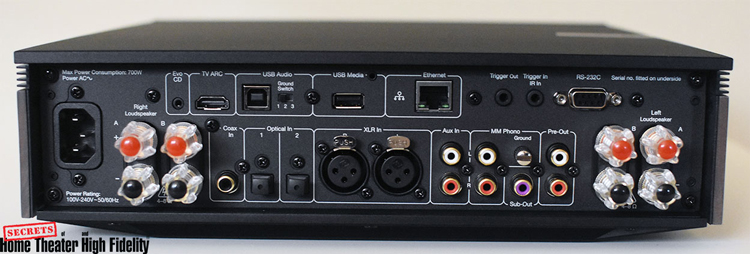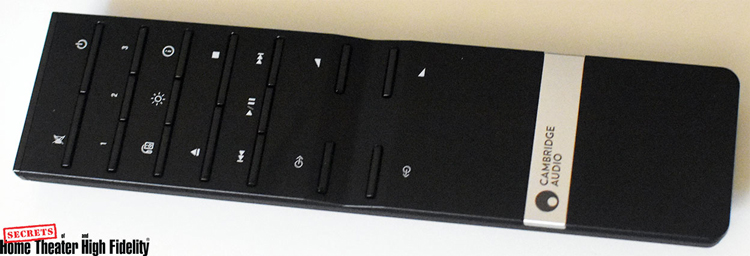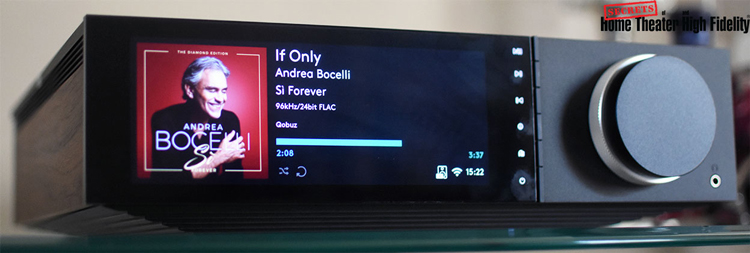The Cambridge Audio Evo 150 is basically a streamer, DAC, and integrated amplifier all in one chassis. Its design emphasizes not only its functions and performance but also its form and appearance. The Evo 150 may have the appearance of a lifestyle product with its contemporary and attractive look, but as my review below indicates, its performance leaves no doubt that it is a hi-fi product first and foremost. Calling it an “all-in-one” player without it being able to play discs is up-to-date since streaming music is just about all everyone is doing these days. Playing discs is passé.
Cambridge Audio Evo 150 All-In-One Player
- Appealing design with great build quality.
- Large color LCD front-panel display.
- Versatile input connectivity for both digital and analog signals.
- Provision of line-level pre-out and subwoofer outputs.
- State-of-the-art DAC capable of decoding MQA signals and processing up to DSD256 and 32 bit/384 kHz PCM signals.
- Versatile streaming function.
- Bluetooth streaming and wireless output feature.
- Sufficiently powerful onboard amplifier.
- StreamMagic app for streaming and device control.
Cambridge Audio was founded 50 years ago in Cambridge, England. The company’s mission to engineer high-value products that generate high-quality sound is implied clearly on its website. One of the statements is especially amusing: Cambridge Audio wants to save the world from shit sound. As someone who is very much invested in this audio hobby, I highly appreciate this noble mission! The fact that Cambridge Audio has been thriving in the business for over half a century indicates that the company has built itself a solid reputation. Indeed, even though this review marks my first exposure to a Cambridge Audio product, the brand has been on my radar since my early venture into this hobby.
The Evo 150 reviewed here is one of the two all-in-one players (the other is the Evo 75) from the company’s Evo series, which consists of products designed to look as good as they sound. The Evo series products offer design simplicity and timeless aesthetic that is intended to fit into a modern lifestyle. Maybe this conscious design approach to blend the look and the function of the product is the reason why I feel that the Evo 150 radiates an exciting vibe that I rarely feel with other products. True to its whole form and function approach, the Evo 150 can simplify one’s audio system by combining streamer, DAC, and integrated amplifier functionalities in one stylish box about three-quarters of the width of a typical audio component, which is usually about 17”. With a price tag of $3,000, the Evo 150 is not cheap, but it seems to offer a lot for the money with all the included features.
POWER OUTPUT:
150W x 2 into 8 Ohms
AMPLIFICATION:
Class-D Hypex Ncore®
DAC:
ESS Sabre ES9018K2M
FREQUENCY RESPONSE:
20Hz – 20kHz +0/-3dB
ANALOG AUDIO INPUTS:
1 x RCA, 1 x balanced XLR, 1 x MM Phono
DIGITAL AUDIO INPUTS:
2 x TOSLINK optical, 1 x S/PDIF coaxial, 1 x HDMI (TV ARC)
USB AUDIO INPUT:
USB Type B conforming to USB Audio Class 1 or Class 2 (user selectable)
BLUETOOTH:
4.2 A2DP/AVRCP supporting SBC, aptX and aptX HD codecs
DIGITAL SIGNAL COMPATIBILITY:
TOSLINK optical: 16/24bit 32-96kHz PCM
S/PDIF coaxial: 16/24bit 32-192kHz PCM
USB Audio Class 1: Up to 24-bit 96kHz PCM (asynchronous)
USB Audio Class 2: Up to 32-bit 384kHz PCM (asynchronous) and up to DSD256
HDMI ARC: Up to 24-bit 192kHz PCM
Bluetooth: 4.2 A2DP/AVRCP supporting up to aptX HD (24bit 48kHz)
OTHER CONNECTIVITY:
UPnP, Local USB media, Airplay 2, Chromecast Built-In, Internet Radio, Spotify Connect, TIDAL, MQA, Qobuz, Roon Ready.
AUDIO FORMATS:
ALAC, WAV, FLAC, AIFF, DSD (x256), WMA, MP3, AAC, HE AAC AAC+, OGG Vorbis
OUTPUTS:
Speakers A+B
3.5mm headphone
Preamp Output
Subwoofer Output
Bluetooth (integrated)
NETWORK CONNECTIVITY:
Ethernet: IEEE 802.3, 10 Base-T or 100 Base-T
Wi-Fi: Dual-Band 2.4/5GHz
MAX POWER CONSUMPTION:
700W
STANDBY POWER CONSUMPTION:
<0.5W
DIMENSIONS (W x H x D):
12.5 x 3.5 x 13.9 in (317 x 89 x 352 mm)
WEIGHT:
11.7 lbs (5.3 kg)
Website:
MSRP:
$3,000
Company:
The Evo 150 exudes elegance in its modern appearance. Two things that will catch immediate attention looking at its minimally-designed front panel are the large 6.8” color LCD display and a large rotary knob. A closer look reveals the presence of six small rectangular press buttons vertically arranged right on the inner vertical border of the display and a 3.5 mm headphone jack near the lower right corner. The rotary knob turns out to be of a dual-concentric dial variety; the front black part of the knob is to control the volume, while the textured silver back part is to select the input source.
Unlike many audio components out there, the aesthetic aspect of the Evo 150 does not take the backseat to its function. The unique interchangeable magnetically attached side panels showcase this very aspect. Held by strong magnets, these side panels fit snugly in their position. Two pairs of such panels are included in the Evo 150 package; one has a smooth wood-grain finish and the other has a black finish with a wavy surface texture. In my opinion, both finishes enhance the overall appearance of the Evo 150 but evoke different kinds of nuances. The wood-grain finish gives it a more traditional classy-vintage accent while the black-textured finish gives it a more modern chic look. I like the fact that I can easily change these panels from time to time to get the unit a refreshed look.
In a way, the simplistic appearance of the Evo 150 cleverly hides the many functions that the unit can perform. Only the rear panel of the unit, where most of the input-output connectors reside, gives out the complex and advanced nature of the product. These input-output connectors are nicely laid out with a logical grouping of connectors of similar types. There is a sufficient number and variety of input and output connectors to accommodate various setups. The digital input connectors are quite comprehensive consisting of a S/PDIF coaxial (accommodating up to 24-bit/192-kHz PCM signal), two Toslink opticals (accommodating up to 24-bit/96-kHz PCM signal), a USB (accommodating up to 32-bit/384-kHz PCM or DSD256 signal), and an HDMI ARC (accommodating up to 24-bit/192-kHz PCM signal). Two sets of analog line-level input connectors (1 XLR and 1 RCA) are available as well as a set of MM Phono input connectors. Any of these analog line-level connectors can be configured as unity-gain/home-theater bypass for easy home-theater integration. A set of stereo pre-outs for external power amplifier connection and a mono subwoofer connector are provided. The Evo 150 provides two pairs of speaker-level outputs to accommodate bi-wiring or connection to two pairs of speakers. Wireless connectivity of the Evo 150 includes aptX HD Bluetooth and Wi-Fi. A wired Ethernet LAN connection is also available. A set of DC trigger in/out, an RS-232 custom install communication port, a dedicated connector for the Evo CD player, a USB Media connector, and the main power receptacle complete the extensive rear panel connectivity of the Evo 150.
The digital-to-analog conversion inside the Evo 150 is handled by the ES9018K2M Sabre chip that has a 32-bit HyperStream™ architecture and can handle up to 32-bit/384-kHz PCM signal or up to 11.2-MHz DSD (DSD256). The Evo 150 can also unfold MQA-decoded music files. Hence, it is definitely up to the task of processing the current state-of-the-art digital music files, including the high-resolution ones. The onboard amplifier is of Hypex NCore Class D type, capable of producing 150 W per channel into an 8-ohm load. As with any Class D amplifier, it is energy-efficient and thus, the Evo 150 never runs hot even when it is pushed hard.
Secrets Sponsor
The main feature of the Evo 150 that earns it a player attribute is its streaming feature, designated as a StreamMagic music-streaming platform, which requires a network connection (ethernet or Wi-Fi). I found that the streaming feature of the Evo 150 was very versatile. Wireless streaming options include Google Chromecast Built-In and Apple AirPlay 2. The Evo 150 is also certified Roon Ready. The streamer also includes internet radio features and embedded firmware for streaming from Spotify Connect, Tidal, or Qobuz. Although the streaming operation of the Evo 150 can be handled using any UPnP app (such as BubbleUPnP), it is best controlled using Cambridge Audio’s own StreamMagic app, which is available in various platforms (Android, iOS, Windows). I found that the interface of the StreamMagic app to be very user-friendly and appealing. More than just for streaming control, the StreamMagic app can be used to control the whole operation of the Evo 150, including accessing or modifying its settings. In fact, the device settings can only be accessed and modified through this StreamMagic app.
The Evo 150 is supplied with an infra-red remote control, which has a metal faceplate. This remote is of medium size and sits well in the hand. The buttons on the remote, which are of thin rectangular shape, follow the button style on the Evo’s faceplate. They are well organized and clearly labeled, although there is no backlight. This remote can pretty much replace the functions of the buttons and knobs on the front panel of the unit. The Evo 150 responds very well to the commands from the remote control even from relatively large off-axis angles. Since I typically had my iPad nearby, I used the remote control only sparingly and relied mostly on the StreamMagic app on my iPad.
After making the necessary input and output connections, the first order of business was to connect the Evo 150 to my Wi-Fi network, which had a download speed of 400 Mbps. The network connection was essential, not only for its streaming function but also for accessing the device settings through the StreamMagic app. Through its setting menus, I could select the inputs that I wanted to be included in the input-selector list, set my media library, which included the streaming services I wanted to access as part of the library, configure a given analog input as a home-theater bypass, select the speaker output (A, B, or A+B), and pair the Bluetooth output to some Bluetooth speakers or headphones. The menu system of the Evo 150 as accessed through the StreamMagic app was logical and easy to understand, and thus I rarely needed to use the help of the user’s manual, which was available for download from the Cambridge Audio website.
During the review, I used the Evo 150 the way it was designed to be, which was as the centerpiece of my entertainment system. The digital source components used were the PS Audio PerfectWave Transport, which fed the coax digital input, and the Auralic Aries G1 streamer, which was connected to the USB input. The Music Hall Classic turntable was used to test out its MM Phono feature. The speakers driven were the Revel Ultima Studio, connected in a single-wiring fashion. Occasionally, I also connected the subwoofer output of the Evo 150 to the Rythmik F12SE subwoofer to provide bass augmentation. The single-ended analog input was set as home-theater bypass and connected to the front left and right outputs of my Marantz AV8802 surround processor to form an integrated music/home-theater application.
First off, the Evo 150 showed its prowess as the main controller of an entertainment system. Everything worked as advertised without a glitch. It also proved to be a delightful product to use, which could be due to the combination of its ability to smoothly handle the input switching and the clarity of the status of its operation as displayed on its front-panel LCD. Personally, I like knowing the operating status of the device I am using, and the Evo 150 with its larger-than-average display size gave me exactly that in a clear fashion and with the right amount of information. The brightness level of the display can be set to ‘Normal’ or ‘Dim’ depending on one’s preference. I found that the ‘Dim’ setting of the display was sufficiently bright for my application. I wished that a level or two dimmer setting was provided as I felt that even the ‘Dim’ setting could still be too bright for the application in a dimly lit room. I liked the fact that the essential information was displayed in larger digits that could be easily readable from 8-9 ft away. Except in the streaming mode, the display shows the operational status in black and white (white digits/symbols on black background). In the streaming mode, the Evo 150 displays the track and album title, the artist’s name, the file format and its resolution, the track progression, as well as the art cover of the album in color. If you are the type of person who does not like to get distracted by all this information, there is an option to turn off the display completely.
Secrets Sponsor
During my evaluation, the Evo 150 showed that it was a competent performer, producing respectable sonic performance through various digital and analog connections tried. Even its phono and headphone features did not disappoint. I found the phono performance of the Evo 150 was good. Vinyl playback produced a low-noise floor sound that was musically satisfying. My occasional headphone listening sessions through the Evo 150 suggested that its headphone feature was not just an afterthought. Superb clarity and detail as well as a great rendition of musical texture and space were the sonic attributes of my headphone listening experience through the Evo 150. Moreover, the Evo 150 scored high in usage convenience in my book with its Bluetooth output which allowed me to listen wirelessly through my Sony WH-1000XM4 headphones.
In the typical regular listening setting in my relatively large room, the Evo 150’s onboard amplifier proved to be more than capable of comfortably driving my Revel Ultima Studio speakers, which have 6-ohm nominal and 3-ohm minimum impedance. Even when played rather loudly, louder than my normal listening volume level, the Evo 150 maintained its composure well with no noticeable sonic strain.
Equipped with a state-of-the-art DAC, the Evo 150 swiftly handled the playback of various kinds of popular digital music formats up to the resolution it could handle. Overall, the DAC was very adept at resolving details and various sonic nuances in the recording. Used with a good digital signal source, the Evo 150 sounded neutral without being bright and conveyed the dynamics in the recordings with superb transparency.
I was captivated by the rendition of Song of No Regrets from Youn Sun Nah’s Same Girl (2010) album that was accessed from Qobuz through the Auralic Aries G1 streamer and played through the Evo 150’s USB input. Youn Sun Nah’s vocal sounded natural and was made palpable with the Evo 150’s ability to convey her every breath during her singing. The sound image from each acoustic instrument in the track seemed to appear from its steady location in the musical stage and was presented with believable transient attacks and textures. The airiness of the playback of the track was unmissable and the Evo 150’s portrayal of the soundstage width and depth was nothing short of excellent.
On the opposite spectrum of the Youn Sun Nah’s small-ensemble music was the large orchestral music such as On a Clear Day – A Town with an Ocean View from the live-recording album Symphonic Suite “Kiki’s Delivery Service” (2020) by Joe Hisaishi & New Japan Philharmonic World Dream Orchestra. Listening to this track through the Evo 150 convinced me that it also had the necessary grit in its presentation to deliver the grandness of such music. It preserved the liveliness of the presentation by conveying the dynamics and texture of the music convincingly. Besides the midrange clarity, the Evo 150 also excelled in the delivered bass fullness and treble details.
There is no doubt that the versatility of the Evo 150 is enhanced by its streaming feature, which in my opinion becomes the main attraction of the product. Cambridge Audio knows this, and the design of the Evo 150 seems to put an extra focus on this particular feature; from the large display that shows the streaming information in such an appealing fashion to the convenience of the streaming control using the StreamMagic app. The result did not disappoint. I found that my experience in streaming music through the Evo 150 to be smooth sailing. The Evo 150 never failed to recognize the format and the resolution of the musical signals being played and displayed such information on its display. If the album art information is available, it will also be displayed in full color on the display. For MQA playback, there is a green or blue dot next to the MQA indicator on the display. The blue dot is for an MQA Studio file, which has been approved in the studio by the artist/producer or has been verified by the copyright owner.
Although the streaming operation of the Evo 150 was robust, it was not as snappy as I would like in starting playback of a selected track. In streaming from Qobuz or Tidal, for example, there was about a 2-second delay from the time the track selection was made on my iPad until the playback started. In comparison, I got an almost instantaneous playback start after a selection has been made with the Auralic Aries G1 streamer or Altair G1 DAC/streamer in the same Wi-Fi network. This playback latency might take getting used to, but I did not consider it to be too big of an issue, as it was only obvious when jumping from one track to another. It was not a deal-breaker by any means. Because the network platform is all in-house design and the unit is software upgradeable, the latency issue can probably be addressed through a firmware update.
I found that the Evo 150 generally produced sonically delightful outcomes when used as a streamer, even when playing lossy file formats such as mp3 or AAC. But of course, the best sonic results would only be obtained when streaming lossless audio formats. In my setup, the streaming function of the Evo 150 produced slightly different sonic nuances than what I got from streaming through the Auralic Aries G1 with the Evo 150 serving as DAC/amplifier. The presentation of detail and transparency in the music was about the same, however, the direct streaming of the Evo 150 produced slightly more vivid sonic edges in the upper midrange and treble ranges. The neutrality was still there, but the more defined sonic edges pushed it closer toward its neutral limit and reduced any trace of warmth that might be present in the recording. For example, there was a slightly more noticeable sibilance in Youn Sun Nah’s voice in the track Song of No Regrets above when streamed directly through the Evo 150 as compared to the streaming through the Aries G1/Evo 150 combo. It was not excessive, however, and was only obvious during comparison. Your taste might determine which you prefer. In my case, I prefer the less vivid sonic characteristics, but I did not find that the crisp upper midrange/treble of the Evo 150 streaming playback was objectionable. I could also perceive that in some situations, these characteristics might actually bring up a better synergy with some speakers.
The combination of style, versatility, and performance brings so much excitement to this $3000 CAMBRIDGE AUDIO EVO 150 ALL-IN-ONE PLAYER.
- Stylish design with excellent build quality
- Versatile input-output connectivity with strong wireless features
- Robust streaming playback operations
- Appealing StreamMagic control app
- State-of-the-art DAC with high-resolution PCM and DSD processing capability
- Powerful onboard amplification
- Great sonic performance
- Backlit remote control
- More levels of display dimming control
I do think that Cambridge Audio has a winner in the Evo 150 all-in-one player. Its artistic design, versatile features, and strong all-around sonic performance bring undeniable value beyond its $3000 price tag. Minor quibble aside, the Evo 150 also scores high in my book in terms of user experience. A versatile and multi-function product like this can sometimes overwhelm the users, but complemented by the StreamMagic app, the Evo 150 feels simple and so much fun to use. I had a blast reviewing it. The Evo 150 is a hi-fi audio product that epitomizes an excellent balance between substance and style.


